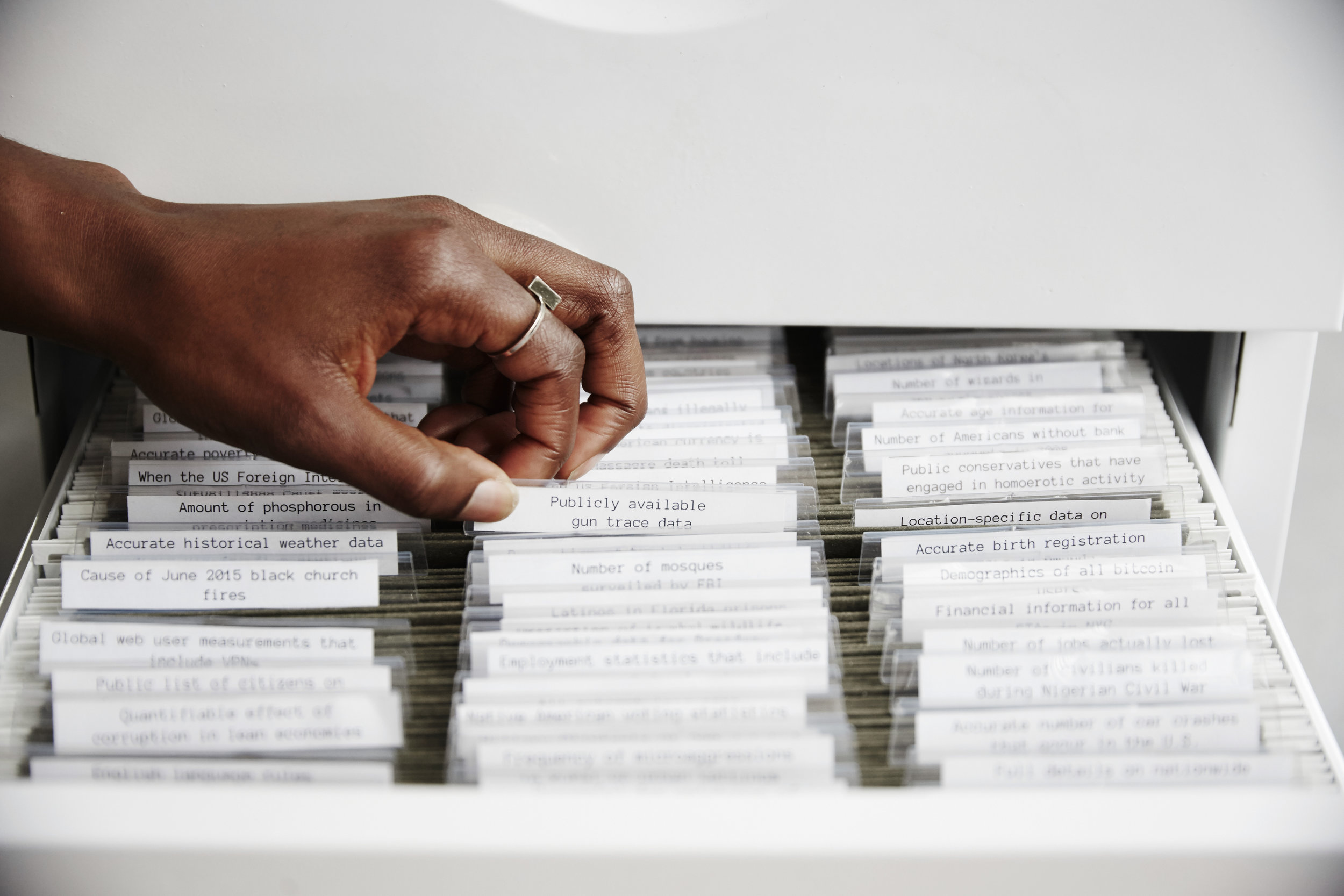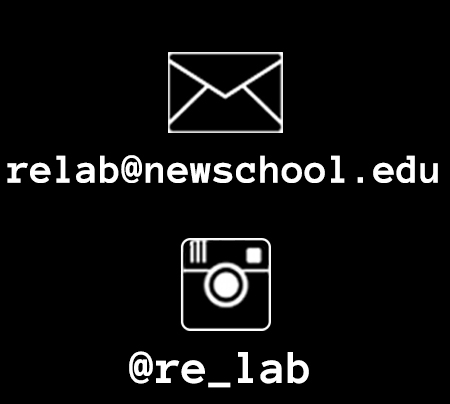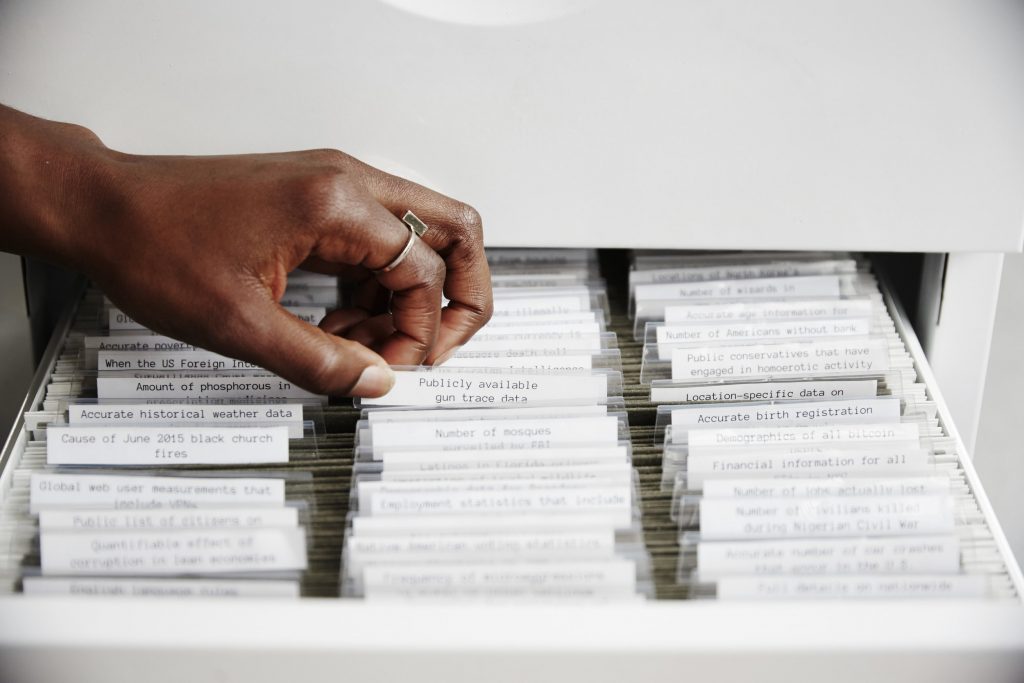Fall 2020 // Week 7 Discussion by Livia Foldes

Hi Morrison, I wasn’t familiar with John Edmonds’ work, and I love its expressive quietness. Its affect and stillness remind me of Campt’s description of the “tense” of a black feminist future: “often humble and strategic, subtle and discriminating… quiet and opportunistic, dogged and disruptive.” The points you bring up about anonymity, seriality, and the struggle to be seen as an individual within the boundaries of state-imposed structures—the “coerced indifference” you describe—reminded me Mimi Onuoha’s The Library of Missing Datasets, a work I return to again and again. Like the mute, reclaimed images of Gulu Real Art Studio, Onuoha also creates a visual archive around a void by quite literally “holding space” for the data that are not collected. In Onuoha’s words.:
“Missing data sets” are my term for the blank spots that exist in spaces that are otherwise data-saturated. My interest in them stems from the observation that within many spaces where large amounts of data are collected, there are often empty spaces where no data live. Unsurprisingly, this lack of data typically correlates with issues affecting those who are most vulnerable in that context.
The word “missing” is inherently normative. It implies both a lack and an ought: something does not exist, but it should. That which should be somewhere is not in its expected place; an established system is disrupted by distinct absence. Just because some type of data doesn’t exist doesn’t mean it’s missing, and the idea of missing data sets is inextricably tied to a more expansive climate of inevitable and routine data collection.
That which we ignore reveals more than what we give our attention to. It’s in these things that we find cultural and colloquial hints of what is deemed important. Spots that we’ve left blank reveal our hidden social biases and indifferences.
- Fall 2020 // Week 12 Discussion by Livia Foldes - January 21, 2021
- Fall 2020 // Week 7 Discussion by Livia Foldes - January 21, 2021



